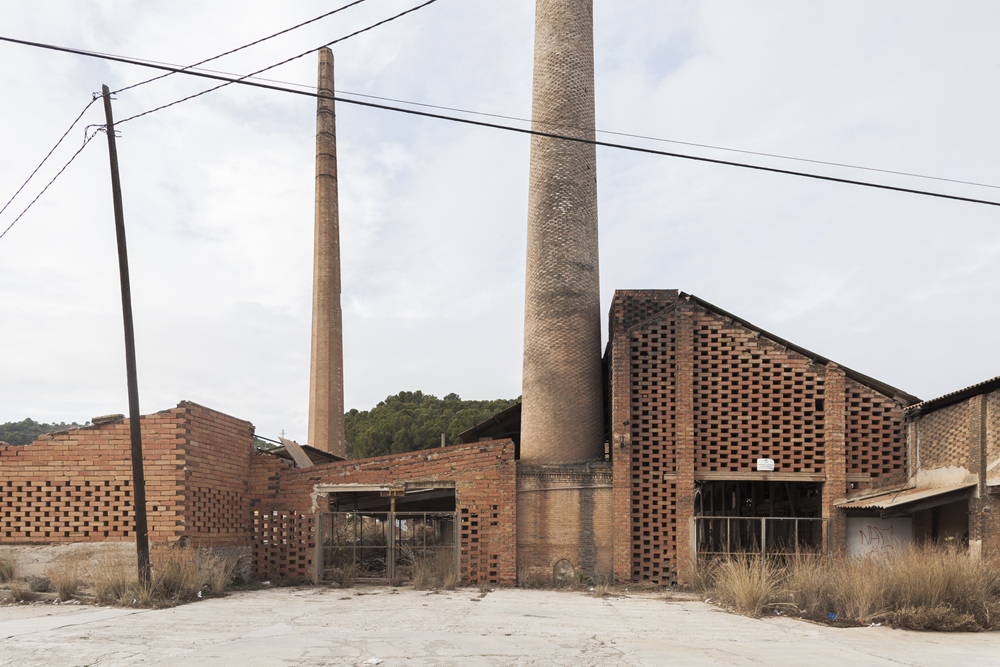
La Salvaora
Location:
Passeig de Els Rajolars, 14
Cronologia:
1956 (main complex)
Ownership:
Private
Current use:
Abandoned
Built-up area:
6.371m²
Plot area:
19.130m²
La Salvadora is one of the main industrial complexes preserved in Els Rajolars. According to locals, it owes its name to singer Lola Flores and her husband Manolo Caracol who visited near the time of its inauguration, prompting the choice to use one of her song titles as its name.
The plot in which it is located occupies practically the entire block located at the northwest end of the area, forming the boundary with the urban centre. Even so, this was not always the case. In a first stage this block was divided into several plots ultimately housing a total of three independent complexes.
As early as the 1940s, the San Blas and Pascual Barreres factories were located at the southwest and northeast ends respectively. Subsequently, the La Salvadora complex appeared, subsuming the Pascual Barreres buildings, maintaining some warehouses and building new ones. Lastly, the San Blas factory also disappeared sometime between 1977 and 1992, leaving only La Salvadora. Some of the individual elements of the two old complexes are still preserved, such as their chimneys or the San Blas warehouse used for the reception of raw materials.
In the case of La Salvadora, all the functional components of a mid-twentieth century brick industry are preserved, in varying conditions, making it possible to observe each element in context and in relationship to the rest of the pieces. That is why this factory constitutes one of the most valuable examples in the area while also illustrating the ethnographic values of Els Rajolars.
In recent years, the deterioration process has accelerated significantly, resulting in the collapse of a significant proportion of the buildings. This means that many of the constructive elements have been more exposed to the weather than originally intended and the various structural systems have been losing fundamental elements, leaving many of the buildings in a state of significant precariousness. It is foreseeable, therefore, that in the coming years we will continue to see this deterioration accelerate if necessary restoration or consolidation work is not undertaken.
